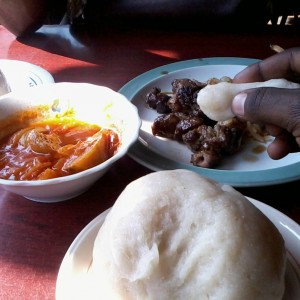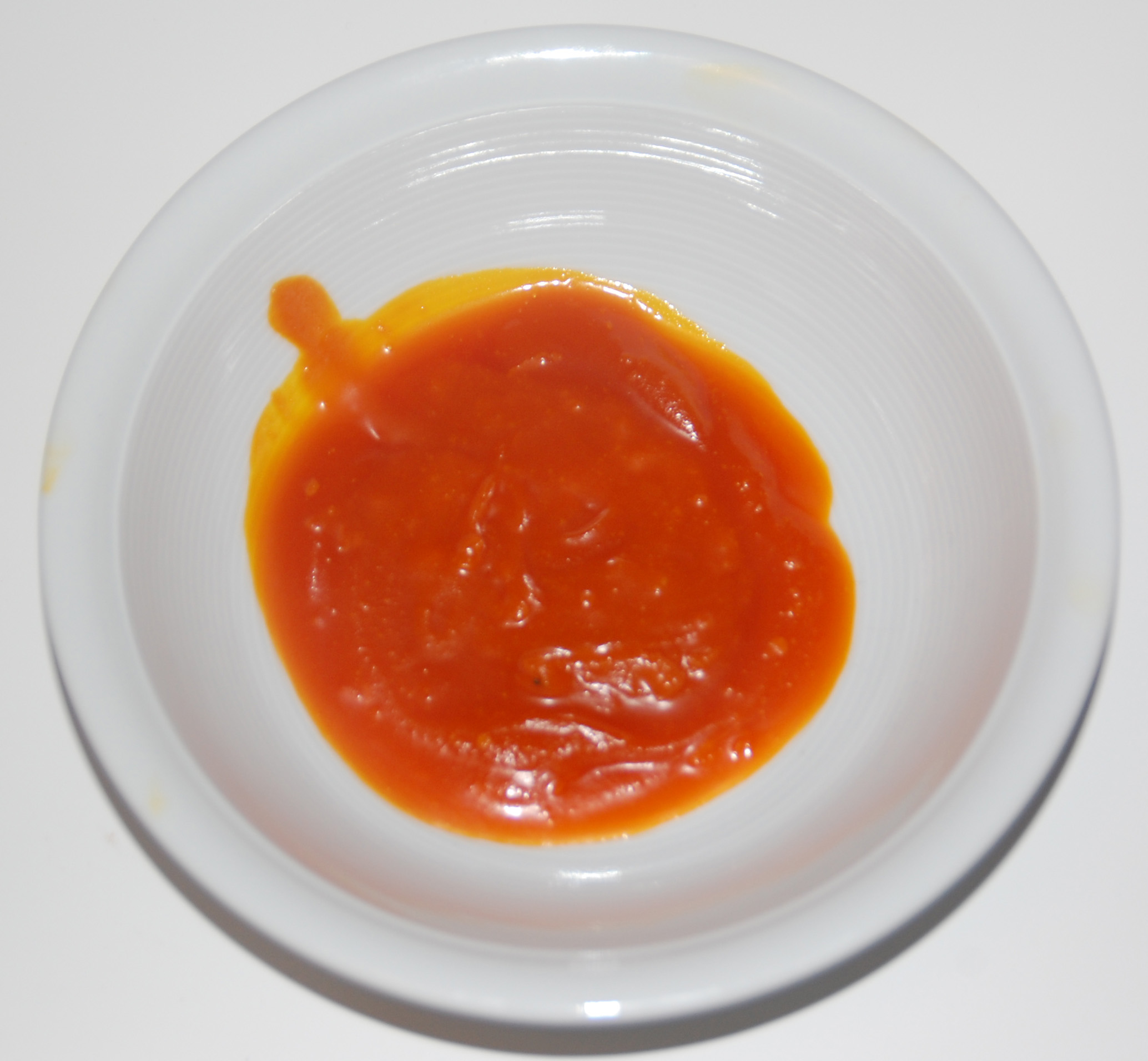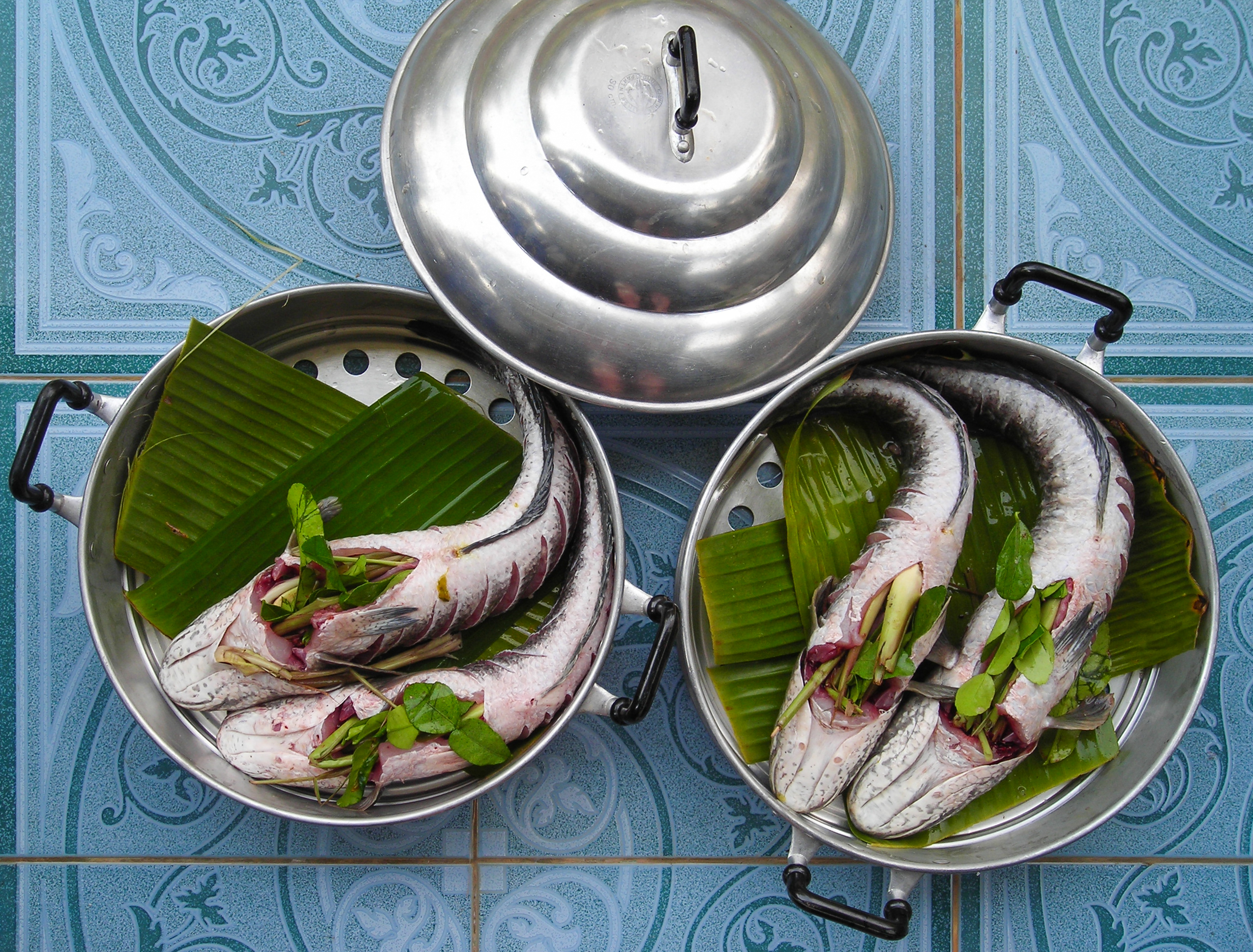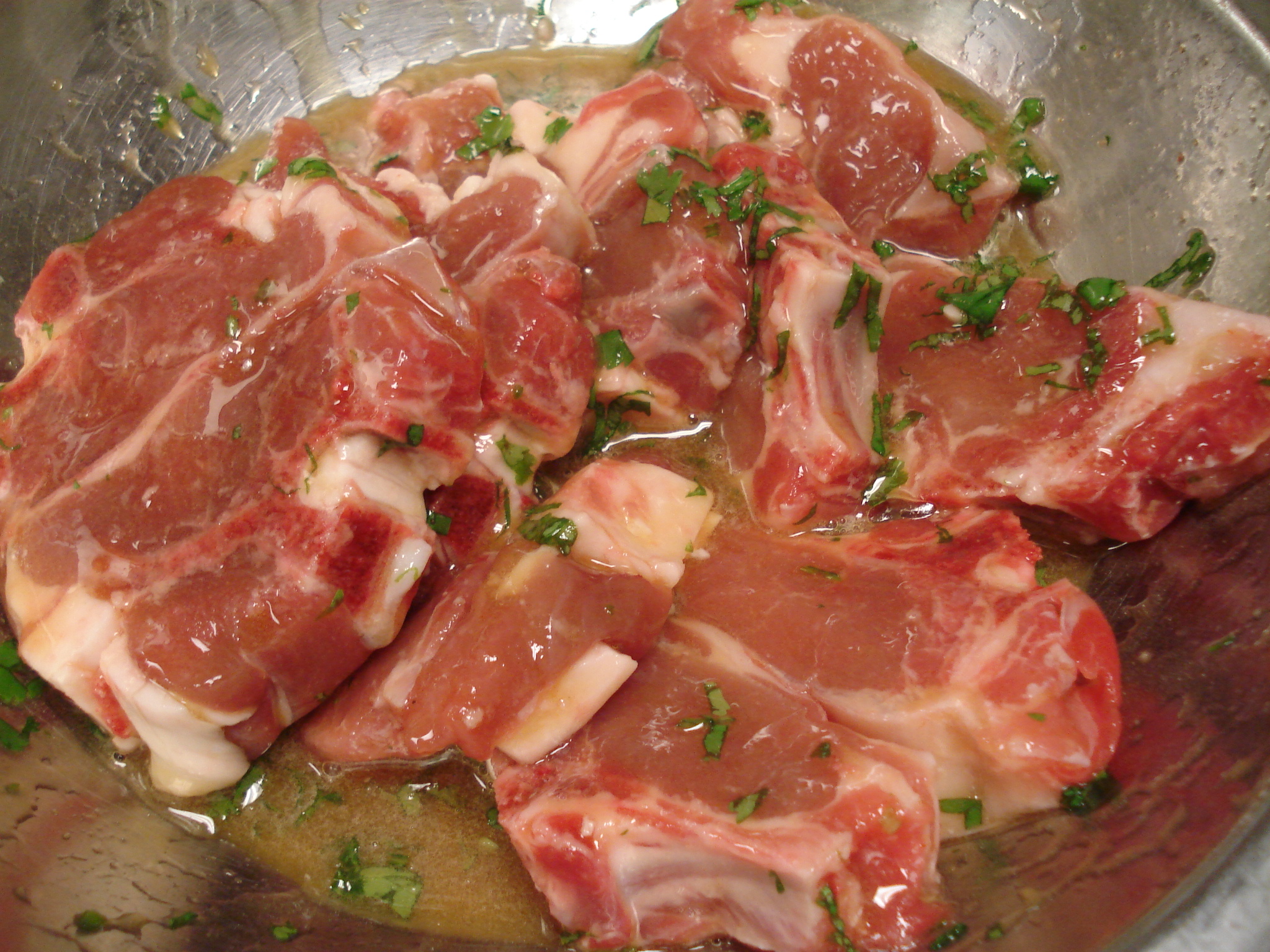|
Cuisine Of Burundi
Burundi is situated in East Africa and has a territory full of mountains, savannas and agricultural fields, with forests in the surrounding rivers and waters. Agriculture is spread on 80% of the country's surface and it mainly includes coffee, tea, maize, beans and manioc. Burundi cuisine also includes beans, which are the staple of Burundi cooking, exotic fruits (mainly bananas), plantains, sweet potatoes, cassava, peas, maize and cereals, like corn and wheat. A major aspect when discussing Burundian cuisine is based on the economic conditions of the country: the Burundian people usually eat homemade food, from homemade vessels also used for drinking, carrying water and storing grain. Food security remains a major problem in Burundi. Ingredients Most of Burundi's dishes are soups that consist of a variety of foods, spices, and herbs such as: * Banana * Beans * Cabbage * Corn * Plantains * Sweet potato * Goat * Sheep * Fish * Onions * Palm oil * Pepper * Salt Typical d ... [...More Info...] [...Related Items...] OR: [Wikipedia] [Google] [Baidu] |
Wheat
Wheat is a group of wild and crop domestication, domesticated Poaceae, grasses of the genus ''Triticum'' (). They are Agriculture, cultivated for their cereal grains, which are staple foods around the world. Well-known Taxonomy of wheat, wheat species and hybrids include the most widely grown common wheat (''T. aestivum''), spelt, durum, emmer, einkorn, and Khorasan wheat, Khorasan or Kamut. The archaeological record suggests that wheat was first cultivated in the regions of the Fertile Crescent around 9600 BC. Wheat is grown on a larger area of land than any other food crop ( in 2021). World trade in wheat is greater than that of all other crops combined. In 2021, world wheat production was , making it the second most-produced cereal after maize (known as corn in North America and Australia; wheat is often called corn in countries including Britain). Since 1960, world production of wheat and other grain crops has tripled and is expected to grow further through the middle of ... [...More Info...] [...Related Items...] OR: [Wikipedia] [Google] [Baidu] |
Pepper (seasoning)
Black pepper (''Piper nigrum'') is a flowering vine in the family Piperaceae, cultivated for its fruit (the peppercorn), which is usually dried and used as a spice and seasoning. The fruit is a drupe (stonefruit) which is about in diameter (fresh and fully mature), dark red, and contains a stone which encloses a single pepper seed. Peppercorns and the ground pepper derived from them may be described simply as ''pepper'', or more precisely as ''black pepper'' (cooked and dried unripe fruit), ''green pepper'' (dried unripe fruit), or ''white pepper'' (ripe fruit seeds). Black pepper is native to the Malabar Coast of India, and the Malabar pepper is extensively cultivated there and in other tropical regions. Ground, dried, and cooked peppercorns have been used since antiquity, both for flavour and as a traditional medicine. Black pepper is the world's most traded spice, and is one of the most common spices added to cuisines around the world. Its spiciness is due to the chemical c ... [...More Info...] [...Related Items...] OR: [Wikipedia] [Google] [Baidu] |
Palm Oil
Palm oil is an edible vegetable oil derived from the mesocarp (reddish pulp) of the fruit of oil palms. The oil is used in food manufacturing, in beauty products, and as biofuel. Palm oil accounted for about 36% of global oils produced from oil crops in 2014. Palm oils are easier to stabilize and maintain quality of flavor and consistency in ultra-processed foods, so they are frequently favored by food manufacturers. Globally, humans consumed an average of of palm oil per person in 2015. Demand has also increased for other uses, such as cosmetics and biofuels, encouraging the growth of palm oil plantations in tropical countries. The mass production of palm oil in the tropics has attracted the concern of environmental and human rights groups. The palm oil industry is a significant contributor to deforestation in the tropics where palms are grown and has been cited as a factor in social problems due to allegations of human rights violations among growers. In 2018, a repor ... [...More Info...] [...Related Items...] OR: [Wikipedia] [Google] [Baidu] |
Onion
An onion (''Allium cepa'' , from Latin ), also known as the bulb onion or common onion, is a vegetable that is the most widely cultivated species of the genus '' Allium''. The shallot is a botanical variety of the onion which was classified as a separate species until 2011. The onion's close relatives include garlic, scallion, leek, and chives. The genus contains several other species variously called onions and cultivated for food, such as the Japanese bunching onion '' Allium fistulosum'', the tree onion ''Allium'' × ''proliferum'', and the Canada onion '' Allium canadense''. The name '' wild onion'' is applied to a number of ''Allium'' species, but ''A. cepa'' is exclusively known from cultivation. Its ancestral wild original form is not known, although escapes from cultivation have become established in some regions. The onion is most frequently a biennial or a perennial plant, but is usually treated as an annual and harvested in its first growing season. ... [...More Info...] [...Related Items...] OR: [Wikipedia] [Google] [Baidu] |
Fish As Food
Many species of fish are caught by humans and consumed as food in virtually all regions around the world. Their meat has been an important dietary source of protein and other nutrients in the human diet. The English language does not have a special culinary name for food prepared from fish like with other animals (as with '' pig'' vs. ''pork''), or as in other languages (such as Spanish '' pez'' vs. '' pescado''). In culinary and fishery contexts, ''fish'' may include so-called shellfish such as molluscs, crustaceans, and echinoderms; but, more expansively, ''seafood'' covers both fish and other marine life used as food. Since 1961, the average annual increase in global apparent food fish consumption (3.2 percent) has outpaced population growth (1.6 percent) and exceeded the increase in consumption of meat from all terrestrial animals except poultry (4.9 percent), both combined (2.8 percent) and individually (bovine, ovine, porcine, et cetera). In ''per capita'' terms, f ... [...More Info...] [...Related Items...] OR: [Wikipedia] [Google] [Baidu] |
Lamb And Mutton
Lamb and mutton, collectively sheep meat (or sheepmeat) is one of the most common meats around the world, taken from the domestic sheep, ''Ovis aries'', and generally divided into lamb, from sheep in their first year, hogget, from sheep in their second, and mutton, from older sheep. Generally, "hogget" and "sheep meat" aren't used by consumers outside Norway, New Zealand, South Africa, Scotland, and Australia. Hogget has become more common in England, particularly in the North (Lancashire and Yorkshire) often in association with rare breed and organic farming. In South Asian and Caribbean cuisine, "mutton" often means goat meat.''Oxford English Dictionary'', 3rd edition, June 2003Italian, make similar or even more detailed distinctions among sheep meats by age and sometimes by sex and diet—for example, ''lechazo'' in Spanish refers to meat from milk-fed (unweaned) lambs. Classifications and nomenclature The definitions for lamb, hogget and mutton vary considerably between ... [...More Info...] [...Related Items...] OR: [Wikipedia] [Google] [Baidu] |
Goat Meat
Goat meat is the meat of the domestic goat (''Capra hircus''). The term 'goat meat' denotes meat of older animals, while meat from young goats is called 'kid meat'. In South Asian cuisine, goat meat is called mutton, along with sheep meat.''Oxford English Dictionary'', 3rd edition, June 2003blend of "goat" in French and "sheep" in French, was coined in 1922 and selected by a trade association; it was adopted by the United States Department of Agriculture in 1928, however the term never caught on and is not encountered in the United States. "Cabrito", a word in Spanish and Portuguese, is the meat of a young, milk-fed goat. It is also known as chivo meat. In cuisine Goat meat is both a staple and a delicacy in the world's cuisines. The cuisines best known for their use of goat include African cuisine, Middle Eastern, Indian, Indonesian, Nepali, Bangladeshi, Pakistani, Abruzzese, Mexican, Caribbean (Jamaica), Haitian cuisine, Dominican cuisine and Ecuadorian. Cab ... [...More Info...] [...Related Items...] OR: [Wikipedia] [Google] [Baidu] |
Sweet Potato
The sweet potato or sweetpotato (''Ipomoea batatas'') is a dicotyledonous plant in the morning glory family, Convolvulaceae. Its sizeable, starchy, sweet-tasting tuberous roots are used as a root vegetable, which is a staple food in parts of the world. Cultivars of the sweet potato have been bred to bear tubers with flesh and skin of various colors. Moreover, the young shoots and leaves are occasionally eaten as greens. The sweet potato and the potato are in the order Solanales, making them distant relatives. Although darker sweet potatoes are often known as "yams" in parts of North America, they are even more distant from actual yams, which are monocots in the order Dioscoreales. The sweet potato is native to the tropical regions of South America in what is present-day Ecuador. Of the approximately 50 genera and more than 1,000 species of Convolvulaceae, ''I. batatas'' is the only crop plant of major importance—some others are used locally (e.g., ''I. aquatica'' "ka ... [...More Info...] [...Related Items...] OR: [Wikipedia] [Google] [Baidu] |
Maize
Maize (; ''Zea mays''), also known as corn in North American English, is a tall stout grass that produces cereal grain. It was domesticated by indigenous peoples in southern Mexico about 9,000 years ago from wild teosinte. Native Americans planted it alongside beans and squashes in the Three Sisters polyculture. The leafy stalk of the plant gives rise to male inflorescences or tassels which produce pollen, and female inflorescences called ears. The ears yield grain, known as kernels or seeds. In modern commercial varieties, these are usually yellow or white; other varieties can be of many colors. Maize relies on humans for its propagation. Since the Columbian exchange, it has become a staple food in many parts of the world, with the total production of maize surpassing that of wheat and rice. Much maize is used for animal feed, whether as grain or as the whole plant, which can either be baled or made into the more palatable silage. Sugar-rich varieties called sw ... [...More Info...] [...Related Items...] OR: [Wikipedia] [Google] [Baidu] |
Cabbage
Cabbage, comprising several cultivars of '' Brassica oleracea'', is a leafy green, red (purple), or white (pale green) biennial plant grown as an annual vegetable crop for its dense-leaved heads. It is descended from the wild cabbage ( ''B. oleracea'' var. ''oleracea''), and belongs to the " cole crops" or brassicas, meaning it is closely related to broccoli and cauliflower (var. ''botrytis''); Brussels sprouts (var. ''gemmifera''); and Savoy cabbage (var. ''sabauda''). A cabbage generally weighs between . Smooth-leafed, firm-headed green cabbages are the most common, with smooth-leafed purple cabbages and crinkle-leafed savoy cabbages of both colours being rarer. Under conditions of long sunny days, such as those found at high northern latitudes in summer, cabbages can grow quite large. , the heaviest cabbage was . Cabbage heads are generally picked during the first year of the plant's life cycle, but plants intended for seed are allowed to grow a second year and m ... [...More Info...] [...Related Items...] OR: [Wikipedia] [Google] [Baidu] |
Bean
A bean is the seed of some plants in the legume family (Fabaceae) used as a vegetable for human consumption or animal feed. The seeds are often preserved through drying (a ''pulse''), but fresh beans are also sold. Dried beans are traditionally soaked and boiled, and used in many traditional dishes throughout the world. They can be cooked in many different ways, however, including frying and baking. The unripe seedpods of some varieties are also eaten whole as green beans or '' edamame'' (immature soybean), but many fully ripened beans contain toxins like phytohemagglutinin and require cooking. Terminology The word "bean" and its Germanic cognates (e.g. German '' Bohne'') have existed in common use in West Germanic languages since before the 12th century, referring to broad beans, chickpeas, and other pod-borne seeds. This was long before the New World genus '' Phaseolus'' was known in Europe. With the Columbian exchange of domestic plants between Europe and the A ... [...More Info...] [...Related Items...] OR: [Wikipedia] [Google] [Baidu] |









